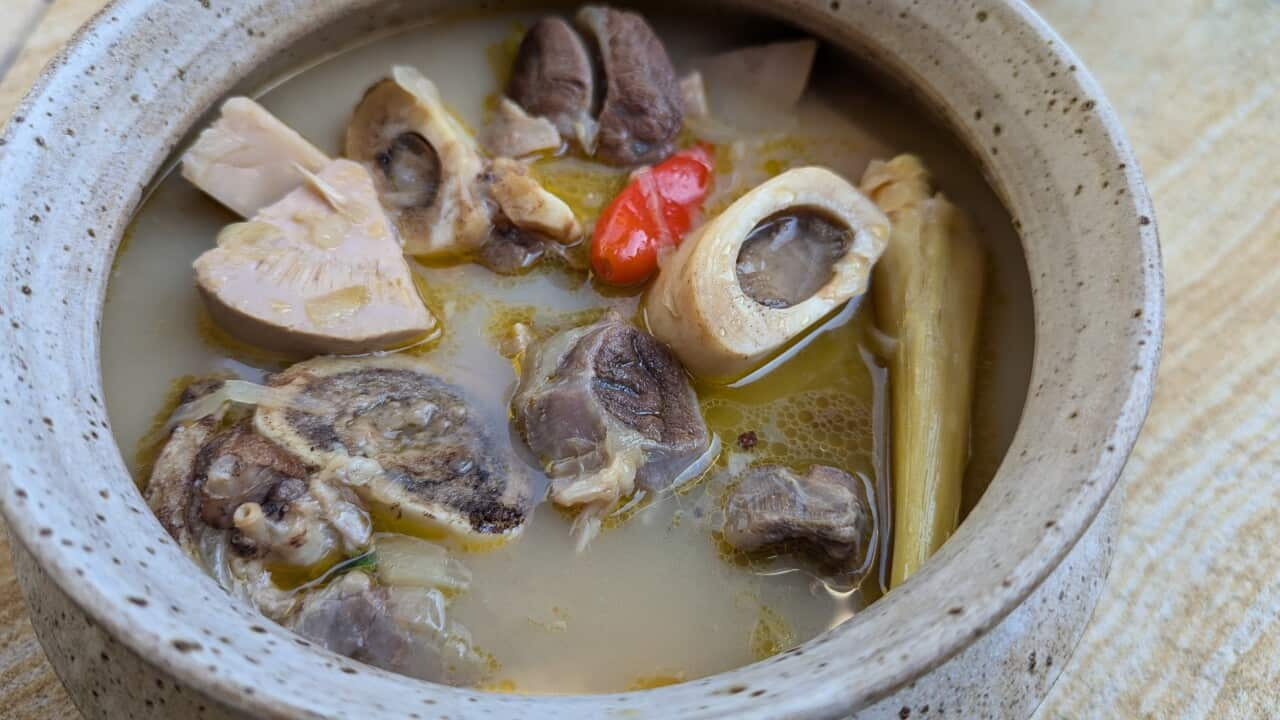Key Points
- The first origin story of the kare-kare is that the kari cooked by Kapampangans were from the Moro-Indo descendants which were more similar to the Southeast Asian curry.
- The second origin story began took place in Manila when the Tagalogs attempted to recreate the original dish.
- The third and more believable version is that the kare-kare came from the Sepoys or Indian riflemen.
The kare-kare dish we know today evolved from three possible origins.
The first is that the kari cooked by Kapampangans were from the Moro-Indo descendants which was more similar to the Southeast Asian curry.
The kari back then – commonly made of mudfish (dalag) with ginger, turmeric and safflower — was popularly sold in roadside huts referred to as kariyan, where the word karinderya originates.
The second origin story took place in Manila when the Tagalogs residing in Pasig struggled to find the original ingredients. Instead, they used substitutes, such as achiote (atsuete) seeds to colour the stew. Other spices were left out due to scarcity of ingredients.
This attempt was ridiculed and dubbed kari-kari, a poor imitation of the original.
The more believable origin story
The third and more believable version is that the kare-kare came from the Sepoys or Indian riflemen who arrived in the Philippines in 1762 through 15 British ships under Queen Victoria’s service.
When the British left, Indian subordinates stayed behind in the town of Cainta where they married local women.
Their yearning for their cuisine led them to create dishes that replicated kaari with spices they had on hand until supplies ran out. They then resorted to using local indigenous ingredients such as goats and carabao to replace lamb and mutton, avoiding cattle for religious reasons.
The Sepoys peddled their version of the kari which had achiote and peanuts, along the Pasig River in huts where travelers from nearby Laguna en route to Manila would stop by for a meal.
The huts were popular among the travellers which they called karihan.
In an SBS Filipino interview with Felice Prudente Sta Maria in 2020, the Filipino culinary historian stressed the importance of turning history into a narrative to reach even young Filipinos living and growing up abroad.
She said, “We have a responsibility of passing on our cultural memory to the younger generation.”
Lamb Shanks Kare-Kare
Kare-Kare is a dish that’s traditionally served during celebrations because it takes time to prepare and it’s a dish that feeds a crowd.
This version uses Australian lamb which is available year-round in supermarkets and local butchers. Lamb shanks are also an economical choice cut.
It is recommended that lamb shanks are cooked a day before to remove the solid fats after resting overnight.
Ingredients
1.5-2 kg lamb shanks (about 3-4 pieces)
2 litres water
1 onion, sliced
5 cloves garlic, finely chopped
2 tablespoons canola oil
150 grams natural (organic) smooth peanut butter
1 bunch bok choy, separated and washed
1 bunch snake beans, cut into 10 cm sticks
1 eggplant, sliced (optional)
Procedure
1. Using a large deep pot, place the lamb shanks with the water. Bring to a boil then turn down heat to a low simmer and cook the shanks for 3-4 hours until tender. Let rest overnight.
2. Remove the solidified fats from the pot. Keep this pot nearby.
3. Using a deep wide pan/pot, add the cooking oil and cook the onions and garlic on medium heat.
4. Add the lamb shanks into the pan/pot one at a time and brown the sides. Leave the shanks in the pan, then add the lamb broth one cup at a time until the shanks are covered halfway.
5. Add the peanut butter and stir with a spoon to mix the peanut butter into the sauce.
6. Turn heat to low and cook the kare kare for 20-30 minutes on a low simmer, which should thicken the sauce and keep the shanks intact. You want the meat to still be on the bone.
7. Add the snake beans in the pot, then the bok choy and eggplants (if using) Place the lid on the pot and turn off heat.
8. Serve with a side of bagoong (shrimp paste) and steaming hot rice





